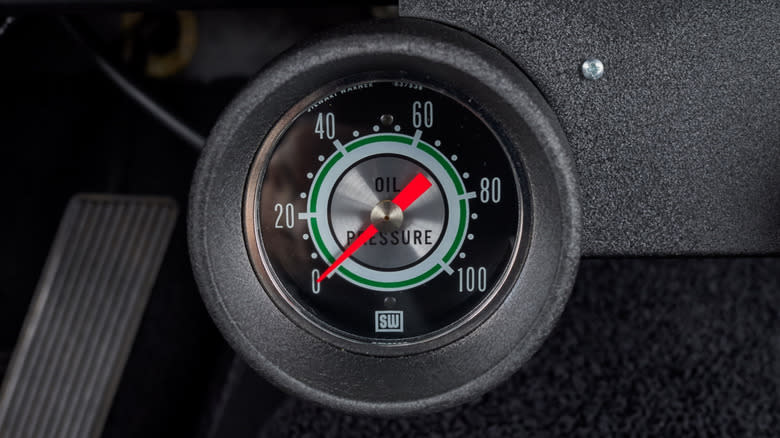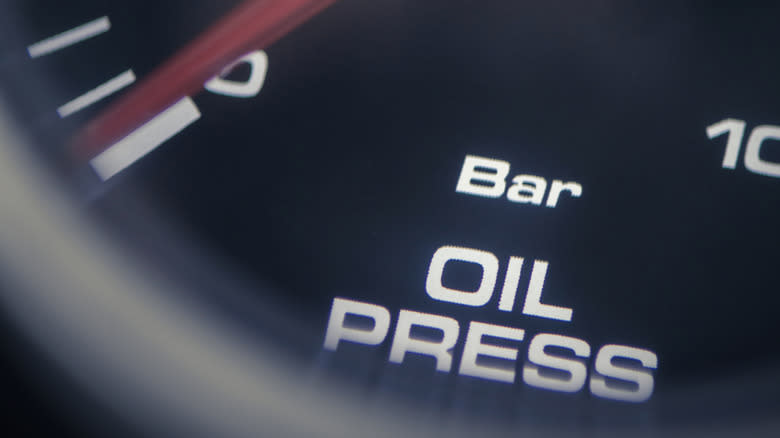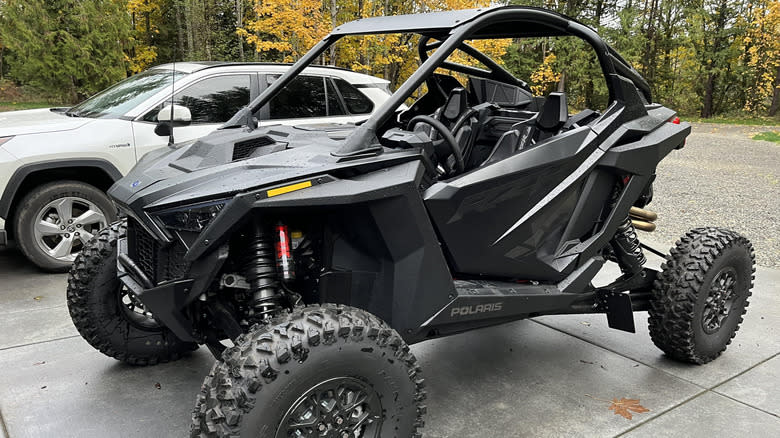
Most of us aren't watching our oil pressure like we do our social feeds -- but maybe we should. Oil is your engine's lifeblood, and oil pressure is like blood pressure. If it drops too low or spikes too high, you've got a problem brewing.
Back in the day, you had a proper gauge on the dash showing you exactly what was happening. Now? Most modern cars have done away with the gauge altogether, swapping it for a warning light. That light doesn't come on until the pressure is dangerously low or high. Maybe your car is guzzling too much oil or you simply put too much oil in your engine -- whatever the reason, your wallet might already be weeping.
Engine oil is constantly on the move. Once the engine fires up, the oil pump kicks into action, pushing oil through the filter and into the engine's moving parts. From there, it drains back into the oil pan and starts the loop all over again. That constant circulation is what keeps your engine from turning into a metal blender. The oil pressure you see -- or don't see, if you're stuck with a modern warning light -- is generated by the pump pushing oil through the system. So what's considered normal?
Under standard operating conditions, you're looking at something between 25 and 65 PSI, depending on the engine. However, once that pressure light flicks on -- or worse, you hear ticking and knocking -- you're in danger territory.
Read more: These Are The Fastest Depreciating Cars, So Buy Them Used And Save Thousands
When The Gauge Goes Rogue

If your oil pressure gauge looks too high, don't panic -- but don't ignore it either. When you first fire up a cold engine, the oil is thicker, and the pressure will naturally read higher. Imagine trying to push cold molasses through a straw and you'll have the basic idea.
However, as your engine warms up to its optimal operating temperature, the oil thins out, causing the pressure to drop. A sudden drop in pressure, on the other hand, could be the result of a lack of engine oil, a sensor glitch, or even a worn oil pump. Start with the basics, check the dipstick and learn to read what it says. If the level looks fine, it might be time to swap out the oil filter or verify the viscosity of the oil so that it matches what your engine needs and what the manufacturer recommends.
High pressure isn't any better. If the oil is too thick, from either using the wrong viscosity or cold weather, it won't flow fast enough. That means less lubrication and more heat. If you've got a clog somewhere in the system, like the oil passages, it could cause pressure to build up dangerously and it won't end well if left untreated. An accurate mechanical gauge or scan tool can help rule out sensor issues.
Watch The Signs Before It Gets Expensive

Your car usually tells you something's wrong before an oil system gives up completely. The warning light is an obvious indicator, but there are other signs that arise from the increased friction that comes with poor lubrication.
If you hear ticking, knocking, or a faint mechanical whine that wasn't there before, that's metal-on-metal action you don't want. Then comes the sluggish performance. The throttle feels lazy, acceleration drops off, and it might even idle like it's had a rough night. None of this screams confidence. Worst-case scenario? Heat. Without enough pressure keeping the oil moving through the engine, parts rub harder, friction skyrockets, and the whole system starts cooking.
Keep in mind that oil pressure isn't just about the pump. Viscosity plays a major role in how your oil pressure behaves, too. When things heat up under the hood, oil gets thinner and flows more easily. On colder days, it thickens up and slows down. That shift directly impacts pressure. Regular oil changes with the right grade go a long way. Consider an oil analysis to know the right grade suitable for your car and use case, because once oil pressure goes, things usually head downhill fast.
Want more like this? Join the Jalopnik newsletter to get the latest auto news sent straight to your inbox...
Read the original article on Jalopnik.






Comments